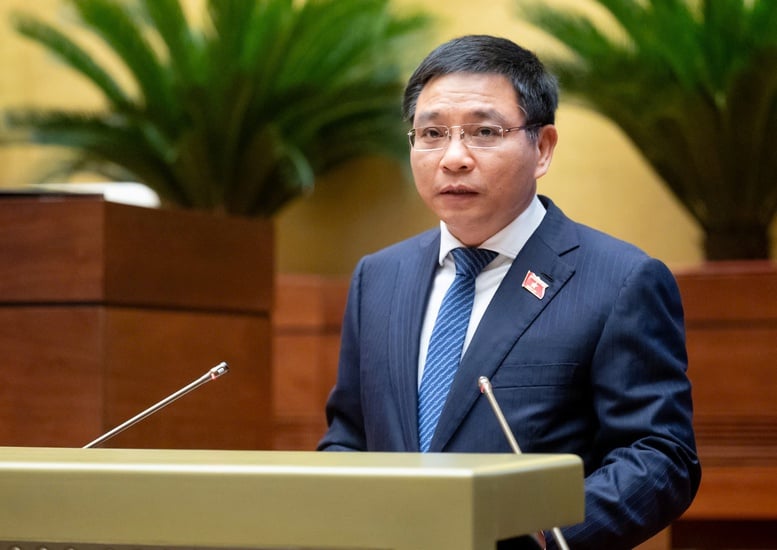
Minister of Finance Nguyen Van Thang presented the Government's proposal.
On the morning of May 19, the National Assembly listened to a report and examined the transition to applying a number of special mechanisms and policies that have been allowed by the National Assembly to be implemented in a number of localities after restructuring the apparatus and expanding administrative boundaries according to the policies of the Party and State.
According to the Government 's Proposal, Resolution No. 60-NQ/TW dated April 12, 2025 of the 11th Conference of the 13th Party Central Committee decided: Organizing local government at 2 levels: provincial level (province, centrally-run city), communal level (commune, ward, special zone under province, city); ending the operation of district-level administrative units (DUs) and the number of provincial-level DUs after the merger is 34 provinces and centrally-run cities.
The organization of two-level local government aims to streamline, improve efficiency, effectiveness and efficiency of local government. The implementation of the arrangement of provincial-level administrative units aims to maximize the potential and advantages of socio-economic development of each locality, support each other to promote the common socio-economic development of the administrative units after the arrangement.
Up to now, there are 10 localities nationwide (including provinces and cities: Hanoi, Hai Phong, Thanh Hoa, Nghe An, Hue, Da Nang, Khanh Hoa, Buon Ma Thuot in Dak Lak province, Ho Chi Minh City and Can Tho) that are applying specific mechanisms and policies according to separate Laws and Resolutions of the National Assembly.
Implementing Resolution No. 60-NQ/TW, 6/10 of the above localities will be directly affected by the organization of 2-level local government, including the provinces and cities: Hai Phong, Da Nang, Khanh Hoa, Dak Lak (related to Buon Ma Thuot city), Ho Chi Minh City and Can Tho.
Presenting the Report to the National Assembly, Minister of Finance Nguyen Van Thang emphasized that the merger of provincial-level administrative units and the termination of the operations of district-level administrative units lead to changes in geographical boundaries, scope of management, legal status, population size, socio-economic development situation... of localities.
This raises an urgent need for transitional regulations on the continued application of specific mechanisms and policies currently being implemented in localities subject to rearrangement to ensure continuity and stability of legal regulations in management, operation and socio-economic development in these localities.
The Minister of Finance also emphasized the need to issue transitional regulations to apply a number of specific mechanisms in localities under the arrangement. That is: Ensuring continuity, not affecting the investment and business environment and continuing to promote the achieved results; the arrangement of 2-level administrative units does not lose the role and unique characteristics of the locality; creating a legal basis for handling transitional issues, avoiding creating legal gaps; creating a practical basis for perfecting the law.
To fully exploit the potentials and advantages as well as create new positions and strengths for localities and implement the direction of the Politburo, the Government proposes that the National Assembly allow localities after the merger of provincial-level administrative units (including the provinces and cities: Hai Phong, Da Nang, Khanh Hoa, Ho Chi Minh City and Can Tho) to continue implementing the specific mechanisms and policies that the National Assembly had allowed to be implemented in the localities before the merger of provincial-level administrative units.
At the same time, the new corresponding communes and wards in Buon Ma Thuot city, Dak Lak province, after implementing the arrangement of commune-level administrative units, are allowed to apply the specific mechanisms and policies that the National Assembly has allowed to implement.
The Government is assigned to direct relevant agencies to summarize and evaluate specific mechanisms and policies for localities (after completing the arrangement of 2-level administrative units) to adjust and supplement them to suit the new situation or legalize clear issues that have been tested in practice for nationwide application.
Reporting on the review of this content, Chairman of the National Assembly's Economic and Financial Committee Phan Van Mai said that the Government's submission to the National Assembly for consideration and decision on the transition to applying a number of specific mechanisms and policies that have been permitted by the National Assembly to be implemented in a number of localities after restructuring the apparatus and expanding administrative boundaries according to the Party and State's policies has sufficient political, legal and practical basis. Therefore, the Economic and Financial Committee agrees with this policy.
The Economic and Financial Committee found that, in fact, allowing the transition to apply some specific mechanisms and policies in localities after the administrative unit arrangement is not simply a matter of expanding the scope of application of specific mechanisms and policies in some localities, but will be related to many aspects of economics and budget (implementation resources, state budget revenue and expenditure policies).
Therefore, the audit agency recommends that the Government direct attention to assessing the impact of policies to ensure the maintenance of the principle of revenue balance in accordance with the State Budget Law.
In addition, there are also opinions that it is necessary to evaluate and summarize to legalize and apply to all localities. For cities applying special mechanisms and policies to merge into provinces, it is necessary to redefine the regulation ratio to account for and divide the central budget, local budget...
Thu Giang
Source: https://baochinhphu.vn/de-xuat-6-tinh-thanh-sau-sap-nhap-tiep-tuc-thuc-hien-co-che-dac-thu-102250519114556903.htm


![[Photo] President Luong Cuong presents the 40-year Party membership badge to Chief of the Office of the President Le Khanh Hai](https://vphoto.vietnam.vn/thumb/1200x675/vietnam/resource/IMAGE/2025/5/19/a22bc55dd7bf4a2ab7e3958d32282c15)


![[Photo] General Secretary To Lam attends the conference to review 10 years of implementing Directive No. 05 of the Politburo and evaluate the results of implementing Regulation No. 09 of the Central Public Security Party Committee.](https://vphoto.vietnam.vn/thumb/1200x675/vietnam/resource/IMAGE/2025/5/19/2f44458c655a4403acd7929dbbfa5039)
![[Photo] Close-up of Tang Long Bridge, Thu Duc City after repairing rutting](https://vphoto.vietnam.vn/thumb/1200x675/vietnam/resource/IMAGE/2025/5/19/086736d9d11f43198f5bd8d78df9bd41)
![[Photo] Panorama of the Opening Ceremony of the 43rd Nhan Dan Newspaper National Table Tennis Championship](https://vphoto.vietnam.vn/thumb/1200x675/vietnam/resource/IMAGE/2025/5/19/5e22950340b941309280448198bcf1d9)














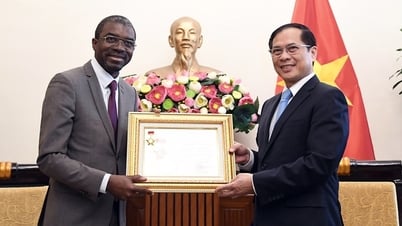
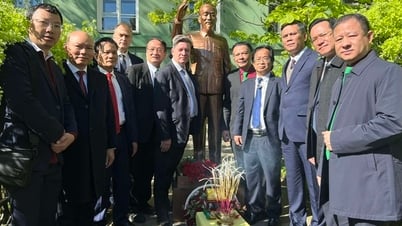



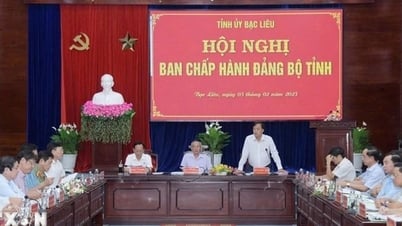
![[Photo] Prime Minister Pham Minh Chinh inspects the progress of the National Exhibition and Fair Center project](https://vphoto.vietnam.vn/thumb/1200x675/vietnam/resource/IMAGE/2025/5/19/35189ac8807140d897ad2b7d2583fbae)


















































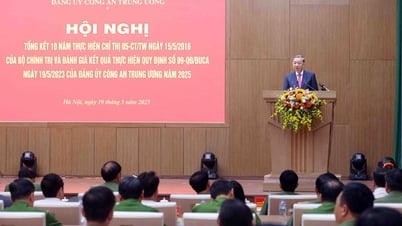









![[VIDEO] - Enhancing the value of Quang Nam OCOP products through trade connections](https://vphoto.vietnam.vn/thumb/402x226/vietnam/resource/IMAGE/2025/5/17/5be5b5fff1f14914986fad159097a677)




Comment (0)